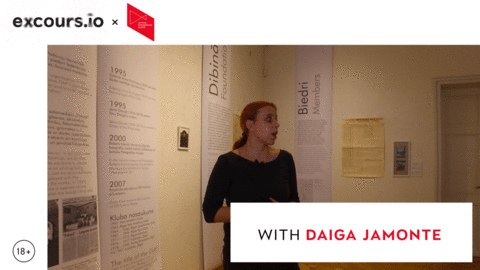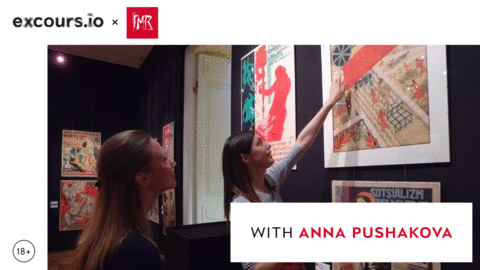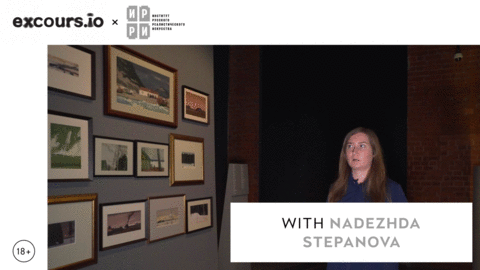Nissky. Horizon is a compelling exhibition at the Institute of Russian Realistic Art that explores the intricate relationship between contemporary art and traditional Russian realism. Featuring a diverse array of artists, the exhibition invites viewers to engage with works that reflect on cultural heritage while pushing artistic boundaries. Each piece serves as a dialogue between past and present, showcasing how contemporary creators reinterpret classical themes and techniques. This fusion not only honors the legacy of Russian art but also challenges perceptions, encouraging a deeper understanding of identity and artistic expression in today’s globalized context. Through thought-provoking installations and evocative imagery, Nissky. Horizon celebrates the enduring relevance of realism in contemporary discourse.
Why should you watch this?
This exhibition invites you to explore the intricate interplay between tradition and innovation in contemporary art. This showcase features a diverse array of works that challenge conventional narratives, offering fresh perspectives on cultural identity and artistic expression. By engaging with both established and emerging artists, the exhibition creates a dialogue that resonates with today’s societal themes. Don’t miss this opportunity to witness how contemporary art reflects and reframes our understanding of the world — each piece serves as a unique lens through which to view the complexities of modern life. Immerse yourself in this vibrant exploration and discover the transformative power of art.

Izstāde „Fotokluba „Rīga” Vēsture”
In the early 1960s, photography emerged as a recognized art form, yet, in Latvia, it struggled for acceptance in traditional art spaces. The establishment of the Photo Club “Rīga” in 1962 marked a pivotal moment, fostering a vibrant community that embraced photography’s artistic potential. This collective became a vital force in shaping the perception of art photography both locally and globally, drawing in visionary talents who pushed creative boundaries. The club’s ongoing legacy reflects not just the evolution of photography as an art form but also its enduring relevance within contemporary Latvian culture. As it adapts to new challenges and styles, the Photo Club remains a cherished cornerstone, celebrating its historical impact while inspiring future generations of photographers.
Why should you watch this?
Joining a guided tour of this exhibition offers an invaluable opportunity to delve into the nuanced evolution of photography as an art form, enriching our understanding of its role in contemporary visual culture. With today’s landscape awash in images, the tour provides context to the historical dialogues and artistic practices that shaped current perceptions of photography. It invites reflection on the delicate interplay between artist and viewer, shedding light on how these artworks resonate with themes of identity and memory. Engaging with the photographs in a communal setting not only enhances appreciation for the craft but also encourages a deeper connection to the stories that accompany each piece, making the experience both enriching and thought-provoking in our fast-paced, image-driven world.

Рулевые революции. К 100-летию Великой Октябрьской социалистической революции
The exhibition illuminates the profound influence of the Great October Revolution on Eastern art. Featuring over 100 works from Soviet Turkmenistan, Uzbekistan, Azerbaijan, Mongolia, China, and Vietnam, the exhibition showcases a rich tapestry of artistic expressions—embroideries, posters, paper cutouts, and more—that reflect a unique amalgamation of local traditions and Soviet ideologies. Visitors will encounter the cult of personality through portraits of revolutionary leaders, discover the vibrant propaganda posters that redefined societal roles, and engage with stunning engravings depicting the industrial ambitions of China. This exhibition not only highlights the artistic responses to political shifts but also serves as a testament to the complex legacy of the Russian Revolution, revealing how hope, trauma, and cultural identity were woven into the fabric of artistry across nations. Many of these pieces are being showcased to the Russian public for the first time in decades, offering fresh insights into this historical narrative.
Why should you watch this?
The centenary of the October Revolution resonates deeply in today’s world, reflecting how political upheaval can shape cultural identity and artistic expression. The legacy of this pivotal event continues to inform contemporary discussions on nationalism, ideology, and the role of art as both a tool for propaganda and a medium of resistance. As nations grapple with their histories, the transformation of traditional art forms under revolutionary pressures serves as a powerful reminder of how creative expression can embody the struggles for freedom, equality, and social change. By examining the intersections of art and politics in this context, we gain valuable insights into the ongoing dialogues surrounding identity, power, and the cultural narratives that define our societies today. This exhibition not only connects us to the past but also encourages us to contemplate the implications of ideological movements on contemporary artistic practices and cultural discourse.



